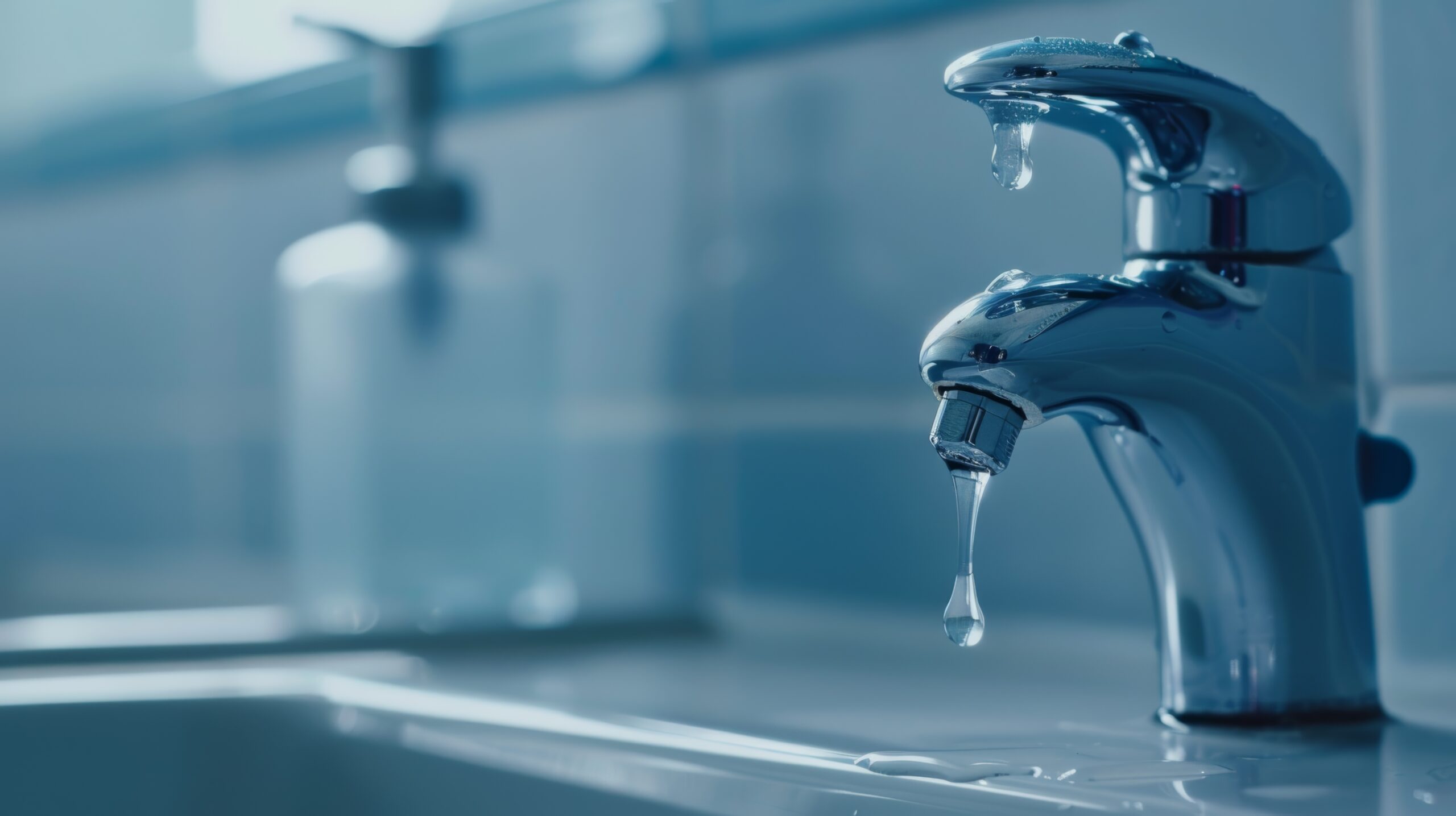
The notorious drip-drip from a leaky faucet may be annoying, but just how serious of a plumbing issue is it? Should you call in a professional to take a look, or try to tackle the issue yourself? And what about similar problems like water leaking out of a faucet handle – are those problems more worrisome?
To help answer questions like these, we’re going over exactly why a leaky faucet can be dangerous, and what specific problems it can lead to. Let’s take a closer look at one of the most frequent plumbing issues!
What Causes a Leaky Faucet?
Leaky faucets are a common household plumbing issue and have several potential causes.
- Corrosion and Rust: If internal plumbing components have started to rust, that can build up and damage valves as well as create other problems, leading to a dripping faucet.
- Seal Problems: The O ring is a seal at the base of the faucet that helps prevent leaks from forming. If an O ring breaks or wears out, you will start seeing leaks around faucet handles. Inlet and outlet seals can also lose functionality over time, causing similar issues.
- Washer or Valve Problems: The washer and valve in the faucet play key roles in keeping water flow turned off. These parts can experience a lot of stress, and if they wear out, water will start dripping.
Are Leaky Faucets Really a Problem?
When a faucet starts to drip, it might seem like a minor annoyance, but the consequences of leaving it unchecked can be far-reaching. Addressing a leaky faucet promptly is essential to prevent the following potential issues from escalating and to ensure the long-term health of your plumbing and home.
- Stains: “Hard” water contains high amounts of trace elements like dissolved calcium and iron. A leaky faucet exposes your sink to a constant drip of water, and that can add up to a lot of exposure to those trace elements over time. This results in reddish-orange stains in your sink or tub, which are essentially rust stains caused when the dissolved iron in the water is exposed to air over time. These rust stains can be difficult to remove and it’s better to avoid them altogether by getting a dripping faucet fixed.
- Countertop and Wall Damage: The presence of moisture can cause other issues over time. For example, if your bathroom faucet is leaking from the handle, even a small leak is spreading moisture into nearby materials. That can cause cabinet wood to warp and damage drywall permanently. It can also wear away at the grout between tiles and cause them to be loosened. A sink handle leaking or other serious problem may also mean that there leaks behind the walls, which can lead to serious cases of rot and structural damage.
- Potential Mold or Mildew Issues: A leaky faucet also means a mold or mildew problem could be developing. Mold likes moist, dark places; so even small leaks that allow moisture into wood, drywall, or insulation can be a perfect habitat for mold spores. Mold remediation projects are time-consuming, very expensive, and are rarely covered by insurance companies – the best way to deal with mold is to make sure it never starts growing in the first place, which is why it’s important to address a faucet dripping water.
- Wasting Water Over Time: It may not seem like a leaky faucet wastes a lot of water, but over time, that can add up faster than you might expect! If a faucet drips around once every second, that’s enough to waste 3,000 gallons of water in a year.
Don’t Let a Drip Turn into a Disaster!
A leaky faucet might seem like a small nuisance, but it can lead to big problems if left untreated. From potential water damage and mold growth, to increased water bills, it’s crucial to address the issue promptly.
At Terry’s Plumbing, we specialize in diagnosing and fixing leaky faucets and other plumbing issues before they escalate. Our experienced professionals can help you avoid costly repairs and ensure your plumbing is in top shape.
Don’t wait for the drip to become a disaster! Contact Terry’s Plumbing today for a thorough inspection and expert repair. Call us or visit our website to schedule your service now. Your home—and your wallet—will thank you!
 (412) 364-9114
(412) 364-9114
